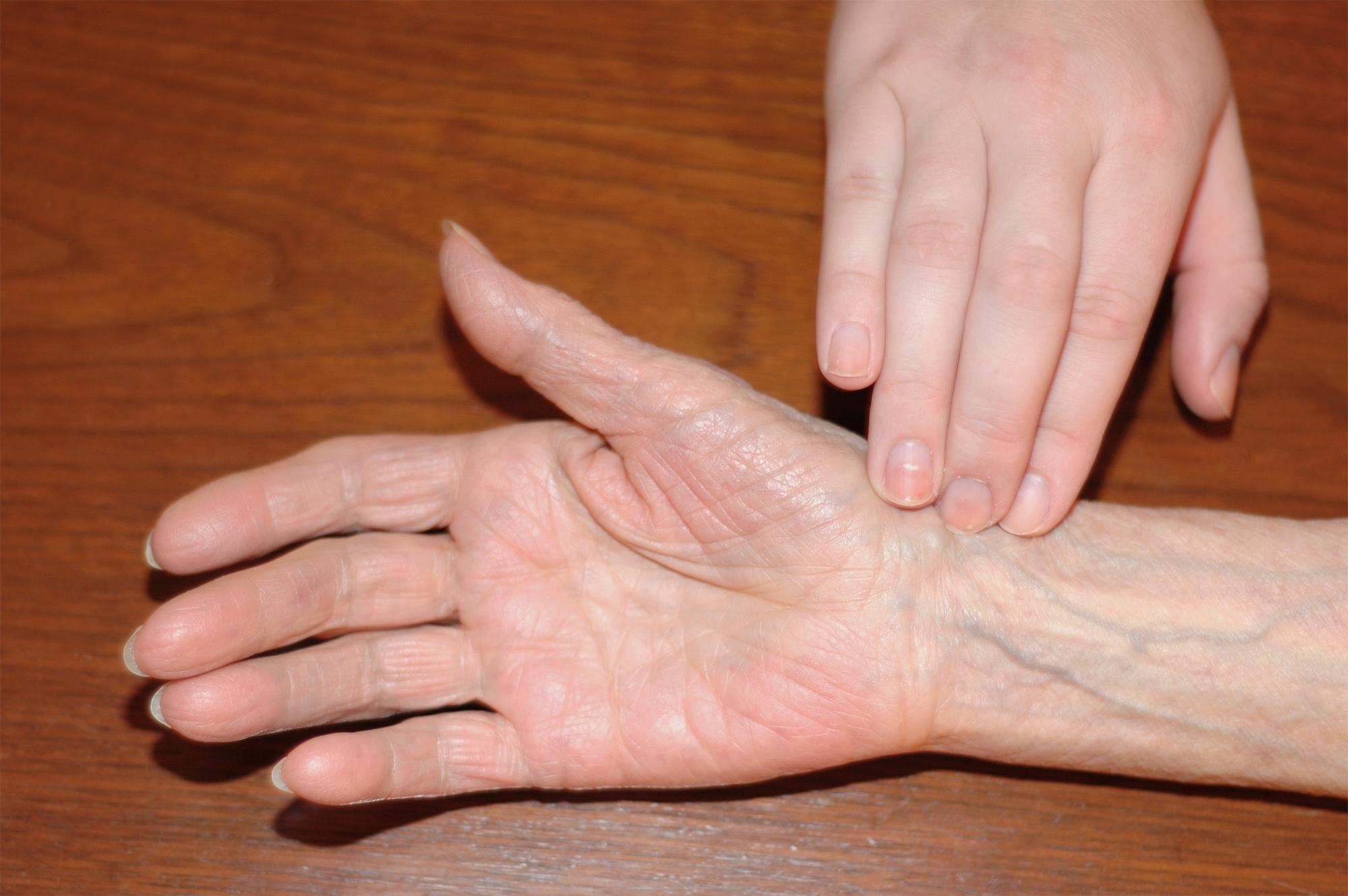Chapter 3: Pulse and Respiration
Radial Pulse
Technique
Use the pads of your first three fingers to gently palpate the radial pulse (OER #1). The pads of the fingers are placed along the radius bone, which is on the lateral side of the wrist (the thumb side; the bone on the other side of the wrist is the ulnar bone). Place your fingers on the radius bone close to the flexor aspect of the wrist, where the wrist meets the hand and bends. See Figure 3.2 for correct placement of fingers. Press down with your fingers until you can best feel the pulsation. Note the rate, rhythm, force, and equality when measuring the radial pulse (OER #1).

Technique Tips
Note the first beat felt in your fingers as “1” and then continue to count. Alternatively, start counting at “0” when your watch is at zero and then continue to count.
Test Yourself!
While watching the interactive video on pulse and respiration measurement, apply your knowledge and critical thinking skills to answer the questions throughout the video.
This video is also at the end of the chapter, uninterrupted, to enable seamless practice.
What should the healthcare provider consider?
You may need to adjust the pressure of your fingers when palpating the radial pulse if you cannot feel the pulse. For example, sometimes pressing too hard can obliterate the pulse (make it disappear). Alternatively, if you do not press hard enough, you may not feel a pulse. You may also need to move your fingers around slightly. Radial pulses are difficult to palpate on newborns and children under five, so healthcare providers usually assess the apical pulse or brachial pulse of newborns and children.
Points to Consider
You can use a Doppler ultrasound device if you are struggling to feel the pulse and are concerned about perfusion into the limbs. This is a handheld device that allows you to hear the whooshing sound of the pulse. The Doppler device is also used following surgery or insertion of a central line to assess blood flow. These devices are most commonly used when assessing peripheral pulses in the lower limbs, such as the dorsalis pedis pulse or the posterior tibial pulse. See Film clip 3.1 for use of a Doppler device. The doppler device is also used to locate the brachial pulse and assess blood pressure in infants.
Film clip 3.1: Use of doppler device
Alternatively, if viewing textbook as a PDF, use this link: https://www.youtube.com/embed/cn3aA0G1mgc?rel=0
Chapter Attributions
Part of this content was adapted from OER #1 (as noted in brackets above):
- © 2015 British Columbia Institute of Technology (BCIT). Clinical Procedures for Safer Patient Care by Glynda Rees Doyle and Jodie Anita McCutcheon, British Columbia Institute of Technology. Licensed under a Creative Commons Attribution 4.0 International License, except where otherwise noted. Download this book for free at http://open.bccampus.ca

